 Global long-term economic growth has slowed dramatically since the financial crisis of 2007–8. This can be illustrated by comparing the two 20-year periods 1988 to 2007 and 2009 to 2028 (where IMF forecasts are used for 2024 to 2028: see WEO Database under the Data link below). Over the two periods, average annual world growth fell from 3.8% to 3.1%. In advanced countries it fell from 2.9% to 1.6% and in developing countries from 4.8% to 4.3%. In the UK it fell from 2.4% to 1.2%, in the USA from 3.1% to 1.8% and in Japan from 1.9% to 0.5%.
Global long-term economic growth has slowed dramatically since the financial crisis of 2007–8. This can be illustrated by comparing the two 20-year periods 1988 to 2007 and 2009 to 2028 (where IMF forecasts are used for 2024 to 2028: see WEO Database under the Data link below). Over the two periods, average annual world growth fell from 3.8% to 3.1%. In advanced countries it fell from 2.9% to 1.6% and in developing countries from 4.8% to 4.3%. In the UK it fell from 2.4% to 1.2%, in the USA from 3.1% to 1.8% and in Japan from 1.9% to 0.5%.
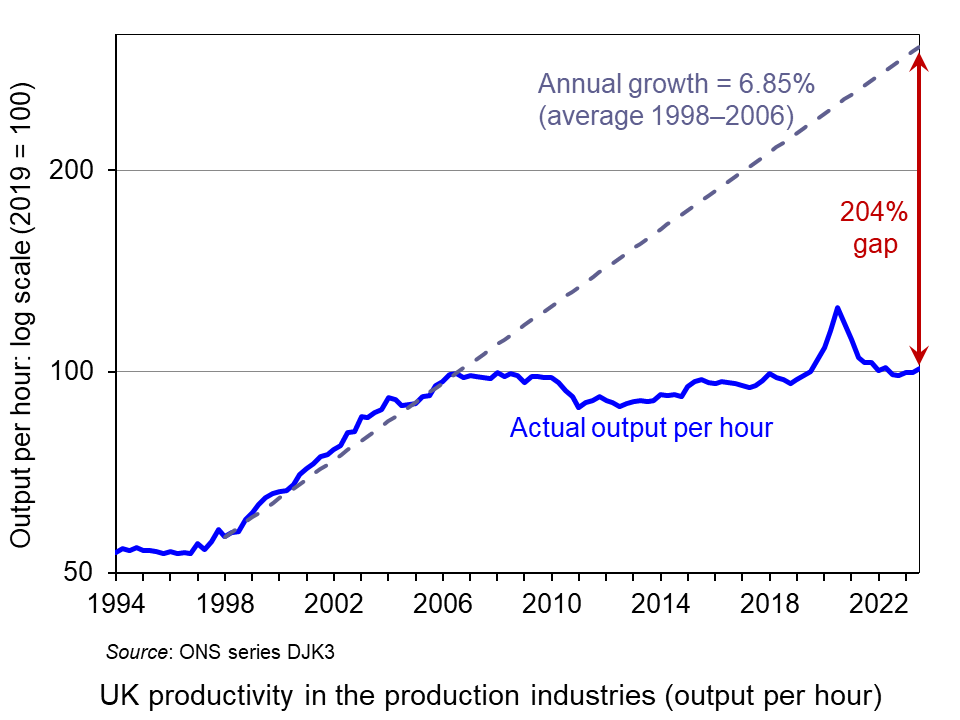 In the UK, labour productivity growth in the production industries was 6.85% per annum from 1998 to 2006. If this growth rate had been maintained, productivity would have been 204% higher by the end of 2023 than it actually was. This is shown in the chart (click here for a PowerPoint).
In the UK, labour productivity growth in the production industries was 6.85% per annum from 1998 to 2006. If this growth rate had been maintained, productivity would have been 204% higher by the end of 2023 than it actually was. This is shown in the chart (click here for a PowerPoint).
The key driver of long-term economic growth is labour productivity, which can best be measured by real GDP per hour worked. This depends on three things: the amount of capital per worker, the productivity of this capital and the efficiency of workers themselves – the latter two giving total factor productivity (TFP). Productivity growth has slowed, and with it the long-term rate of economic growth.
If we are measuring growth in output per head of the population, as opposed to simple growth in output, then another important factor is the proportion of the population that works. With ageing populations, many countries are facing an increase in the proportion of people not working. In most countries, these demographic pressures are likely to increase.
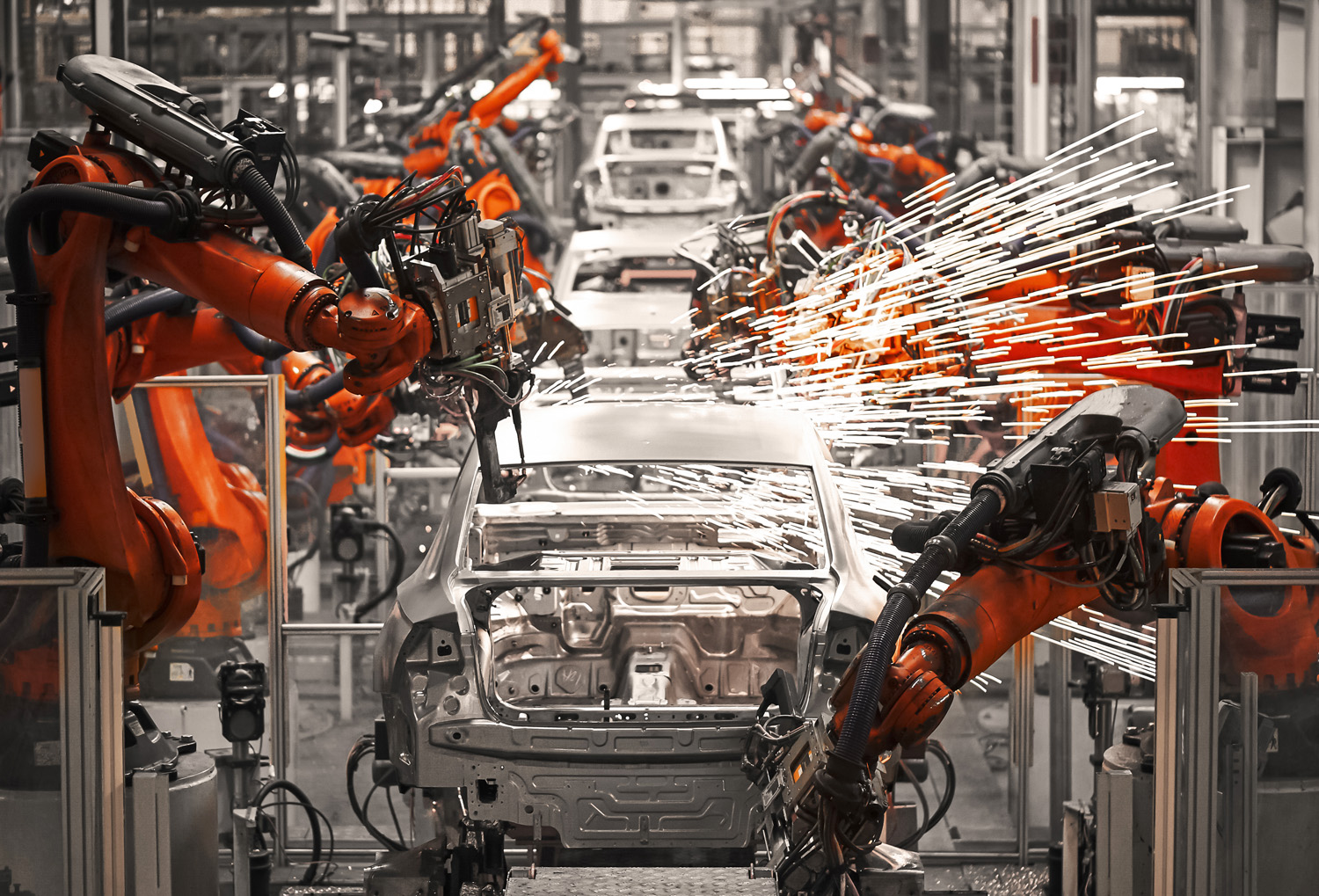 A major determinant of long-term economic growth and productivity is investment. Investment has been badly affected by crises, such as the financial crisis and COVID, and by geopolitical tensions, such as the war in Ukraine and tensions between the USA and China and potential trade wars. It has also been adversely affected by government attempts to deal with rising debt caused by interventions following the financial crisis and COVID. The fiscal squeeze and, more recently higher interest rates, have dampened short-term growth and discouraged investment, thereby dampening long-term growth.
A major determinant of long-term economic growth and productivity is investment. Investment has been badly affected by crises, such as the financial crisis and COVID, and by geopolitical tensions, such as the war in Ukraine and tensions between the USA and China and potential trade wars. It has also been adversely affected by government attempts to deal with rising debt caused by interventions following the financial crisis and COVID. The fiscal squeeze and, more recently higher interest rates, have dampened short-term growth and discouraged investment, thereby dampening long-term growth.
Another factor adversely affecting productivity has been a lower growth of allocative efficiency. Competition in many industries has declined as the rate of new firms entering and exiting markets has slowed. The result has been an increase in concentration and a growth in supernormal profits.
In the UK’s case, growth prospects have also been damaged by Brexit. According to Bank of England and OBR estimates, Brexit has reduced productivity by around 4% (see the blog: The costs of Brexit: a clearer picture). For many companies in the UK, Brexit has hugely increased the administrative burdens of trading with the EU. It has also reduced investment and led to a slower growth in the capital stock.
The UK’s poor productivity growth over many yeas is examined in the blog The UK’s poor productivity record.
Boosting productivity
So, how could productivity be increased and what policies could help the process?
 Artificial intelligence. One important driver of productivity growth is technological advance. The rapid advance in AI and its adoption across much of industry is likely to have a dramatic effect on working practices and output. Estimates by the IMF suggest that some 40% of jobs globally and 60% in advanced countries could be affected – some replaced and others complemented and enhanced by AI. The opportunities for raising incomes are huge, but so too are the dangers of displacing workers and deepening inequality, as some higher-paid jobs are enhanced by AI, while many lower paid jobs are little affected and other jobs disappear.
Artificial intelligence. One important driver of productivity growth is technological advance. The rapid advance in AI and its adoption across much of industry is likely to have a dramatic effect on working practices and output. Estimates by the IMF suggest that some 40% of jobs globally and 60% in advanced countries could be affected – some replaced and others complemented and enhanced by AI. The opportunities for raising incomes are huge, but so too are the dangers of displacing workers and deepening inequality, as some higher-paid jobs are enhanced by AI, while many lower paid jobs are little affected and other jobs disappear.
AI is also likely to increase returns to capital. This may help to drive investment and further boost economic growth. However, the increased returns to capital are also likely to exacerbate inequality.
To guard against the growth of market power and its abuse, competition policies may need strengthening to ensure that the benefits of AI are widely spread and that new entrants are encouraged. Also training and retraining opportunities to allow workers to embrace AI and increase their mobility will need to be provided.
 Training. And it is not just training in the use of AI that is important. Training generally is a key ingredient in encouraging productivity growth. In the UK, there has been a decline in investment in adult education and training, with a 70% reduction since the early 2000s in the number of adults undertaking publicly-funded training, and with average spending on training by employers decreasing by 27% per trainee since 2011. The Institute for Fiscal Studies identifies five main policy levers to address this: “public funding of qualifications and skills programmes, loans to learners, training subsidies, taxation of training and the regulation of training” (see link in articles below).
Training. And it is not just training in the use of AI that is important. Training generally is a key ingredient in encouraging productivity growth. In the UK, there has been a decline in investment in adult education and training, with a 70% reduction since the early 2000s in the number of adults undertaking publicly-funded training, and with average spending on training by employers decreasing by 27% per trainee since 2011. The Institute for Fiscal Studies identifies five main policy levers to address this: “public funding of qualifications and skills programmes, loans to learners, training subsidies, taxation of training and the regulation of training” (see link in articles below).
Competition. Another factor likely to enhance productivity is competition, both internationally and within countries. Removing trade restrictions could boost productivity growth; erecting barriers to protect inefficient domestic industry would reduce it.
Investment. Policies to encourage investment are also key to productivity growth. Private-sector investment can be encouraged by tax incentives. For example, in the UK the Annual Investment Allowance allows businesses to claim 100% of the cost of plant and machinery up to £1m in the year it is incurred. However, for tax relief to produce significant effects on investment, companies need to believe that the policy will stay and not be changed as economic circumstances or governments change.
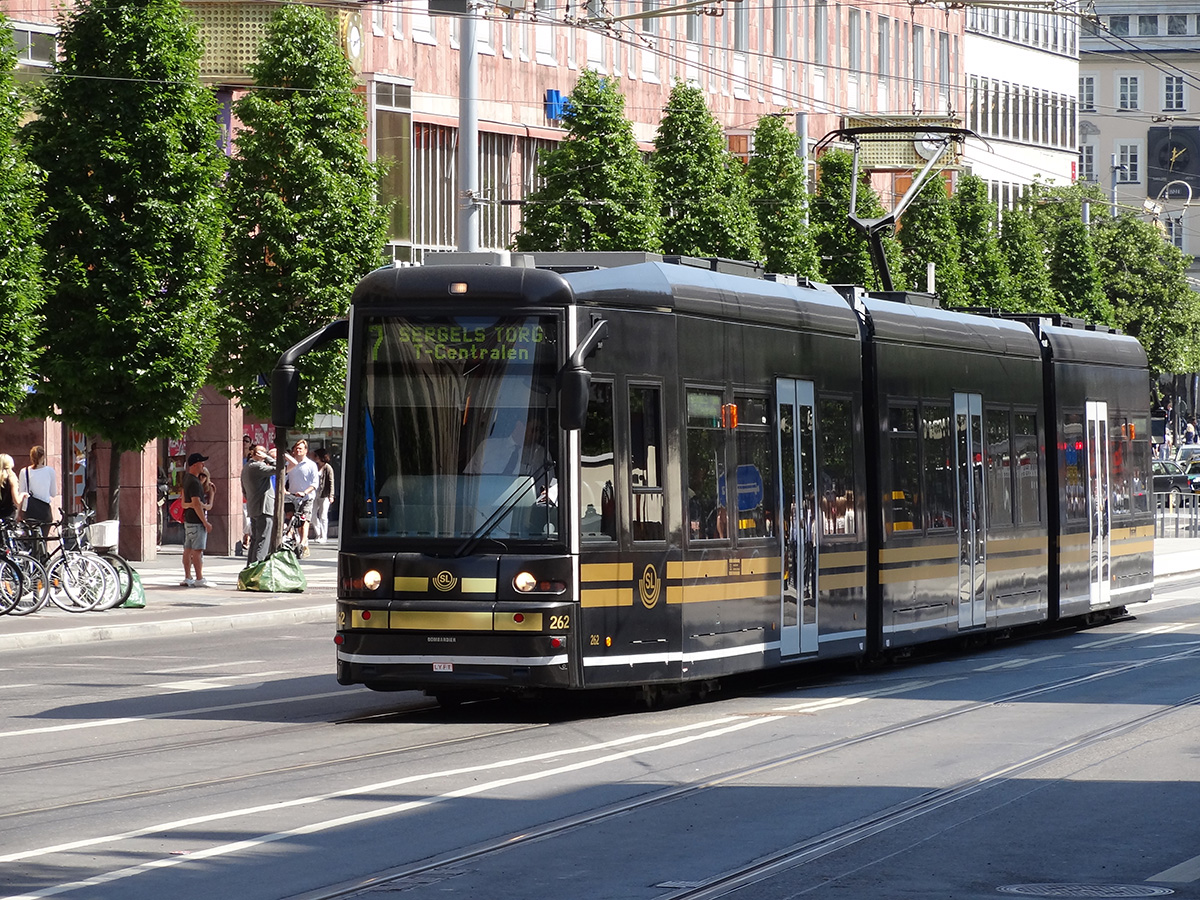 Public-sector investment is also key. Good road and rail infrastructure and public transport are vital in encouraging private investment and labour mobility. And investment in health, education and training are a key part in encouraging the development of human capital. Many countries, the UK included, cut back on public-sector capital investment after the financial crisis and this has had a dampening effect on economic growth.
Public-sector investment is also key. Good road and rail infrastructure and public transport are vital in encouraging private investment and labour mobility. And investment in health, education and training are a key part in encouraging the development of human capital. Many countries, the UK included, cut back on public-sector capital investment after the financial crisis and this has had a dampening effect on economic growth.
Regional policy. External economies of scale could be encouraged by setting up development areas in various regions. Particular industries could be attracted to specific areas, where local skilled workers, managerial expertise and shared infrastructure can benefit all the firms in the industry. These ‘agglomeration economies’ have been very limited in the UK compared with many other countries with much stronger regional economies.
Changing the aims and governance of firms. A change in corporate structure and governance could also help to drive investment and productivity. According to research by the think tank, Demos (see the B Lab UK article and the second report below), if legislation required companies to consider the social, economic and environmental impact of their business alongside profitability, this could have a dramatic effect on productivity. If businesses were required to be ‘purpose-led’, considering the interests of all their stakeholders, this supply-side reform could dramatically increase growth and well-being.
Such stakeholder-governed businesses currently outperform their peers with higher levels of investment, innovation, product development and output. They also have higher levels of staff engagement and satisfaction.
Articles
- World Must Prioritize Productivity Reforms to Revive Medium-Term Growth
IMF Blog, Nan Li and Diaa Noureldin (10/4/24)
- Why has productivity slowed down?
Oxford Martin School News, Ian Goldin, Pantelis Koutroumpis, François Lafond and Julian Winkler (18/3/24)
- How can the UK revive its ailing productivity?
Economics Observatory, Michelle Kilfoyle (14/3/24)
- With the UK creeping out of recession, here’s an economist’s brief guide to improving productivity
The Conversation, Nigel Driffield (13/3/24)
- UK economy nearly a third smaller thanks to ‘catastrophically bad’ productivity slowdown
City A.M., Chris Dorrell (12/3/24)
- Can AI help solve the UK’s public sector productivity puzzle?
City A.M., Chris Dorrell (11/3/24)
- AI Will Transform the Global Economy. Let’s Make Sure it Benefits Humanity
IMF Blog, Kristalina Georgieva (14/1/24)
- Productivity and Investment: Time to Manage the Project of Renewal
NIESR, Paul Fisher (12/3/24)
- Productivity trends using key national accounts indicators
Eurostat (15/3/24)
- New report says change to company law could add £149bn to the UK economy
B Lab UK (28/11/23)
- Investment in training and skills: Green Budget Chapter 9
Institute for Fiscal Studies, Imran Tahir (12/10/23)
Reports
Data
Questions
- Why has global productivity growth been lower since 2008 than before 2008?
- Why has the UK’s productivity growth been lower than many other advanced economies?
- How does the short-run macroeconomic environment affect long-term growth?
- Find out why Japan’s productivity growth has been so poor compared with other countries.
- What are likely to be the most effective means of increasing productivity growth?
- How may demand management policies affect the supply side of the economy?
- How may the adoption of an ESG framework by companies for setting objectives affect productivity growth?
 Artificial intelligence is having a profound effect on economies and society. From production, to services, to healthcare, to pharmaceuticals; to education, to research, to data analysis; to software, to search engines; to planning, to communication, to legal services, to social media – to our everyday lives, AI is transforming the way humans interact. And that transformation is likely to accelerate. But what will be the effects on GDP, on consumption, on jobs, on the distribution of income, and human welfare in general? These are profound questions and ones that economists and other social scientists are pondering. Here we look at some of the issues and possible scenarios.
Artificial intelligence is having a profound effect on economies and society. From production, to services, to healthcare, to pharmaceuticals; to education, to research, to data analysis; to software, to search engines; to planning, to communication, to legal services, to social media – to our everyday lives, AI is transforming the way humans interact. And that transformation is likely to accelerate. But what will be the effects on GDP, on consumption, on jobs, on the distribution of income, and human welfare in general? These are profound questions and ones that economists and other social scientists are pondering. Here we look at some of the issues and possible scenarios.
According to the Merrill/Bank of America article linked below, when asked about the potential for AI, ChatGPT replied:
AI holds immense potential to drive innovation, improve decision-making processes and tackle complex problems across various fields, positively impacting society.
But the magnitude and distribution of the effects on society and economic activity are hard to predict. Perhaps the easiest is the effect on GDP. AI can analyse and interpret data to meet economic goals. It can do this much more extensively and much quicker than using pre-AI software. This will enable higher productivity across a range of manufacturing and service industries. According to the Merrill/Bank of America article, ‘global revenue associated with AI software, hardware, service and sales will likely grow at 19% per year’. With productivity languishing in many countries as they struggle to recover from the pandemic, high inflation and high debt, this massive boost to productivity will be welcome.
But whilst AI may lead to productivity growth, its magnitude is very hard to predict. Both the ‘low-productivity future’ and the ‘high-productivity future’ described in the IMF article linked below are plausible. Productivity growth from AI may be confined to a few sectors, with many workers displaced into jobs where they are less productive. Or, the growth in productivity may affect many sectors, with ‘AI applied to a substantial share of the tasks done by most workers’.
Growing inequality?
 Even if AI does massively boost the growth in world GDP, the distribution is likely to be highly uneven, both between countries and within countries. This could widen the gap between rich and poor and create a range of social tensions.
Even if AI does massively boost the growth in world GDP, the distribution is likely to be highly uneven, both between countries and within countries. This could widen the gap between rich and poor and create a range of social tensions.
In terms of countries, the main beneficiaries will be developed countries in North America, Europe and Asia and rapidly developing countries, largely in Asia, such as China and India. Poorer developing countries’ access to the fruits of AI will be more limited and they could lose competitive advantage in a number of labour-intensive industries.
Then there is growing inequality between the companies controlling AI systems and other economic actors. Just as companies such as Microsoft, Apple, Google and Meta grew rich as computing, the Internet and social media grew and developed, so these and other companies at the forefront of AI development and supply will grow rich, along with their senior executives. The question then is how much will other companies and individuals benefit. Partly, it will depend on how much production can be adapted and developed in light of the possibilities that AI presents. Partly, it will depend on competition within the AI software market. There is, and will continue to be, a rush to develop and patent software so as to deliver and maintain monopoly profits. It is likely that only a few companies will emerge dominant – a natural oligopoly.
Then there is the likely growth of inequality between individuals. The reason is that AI will have different effects in different parts of the labour market.
The labour market
 In some industries, AI will enhance labour productivity. It will be a tool that will be used by workers to improve the service they offer or the items they produce. In other cases, it will replace labour. It will not simply be a tool used by labour, but will do the job itself. Workers will be displaced and structural unemployment is likely to rise. The quicker the displacement process, the more will such unemployment rise. People may be forced to take more menial jobs in the service sector. This, in turn, will drive down the wages in such jobs and employers may find it more convenient to use gig workers than employ workers on full- or part-time contracts with holidays and other rights and benefits.
In some industries, AI will enhance labour productivity. It will be a tool that will be used by workers to improve the service they offer or the items they produce. In other cases, it will replace labour. It will not simply be a tool used by labour, but will do the job itself. Workers will be displaced and structural unemployment is likely to rise. The quicker the displacement process, the more will such unemployment rise. People may be forced to take more menial jobs in the service sector. This, in turn, will drive down the wages in such jobs and employers may find it more convenient to use gig workers than employ workers on full- or part-time contracts with holidays and other rights and benefits.
But the development of AI may also lead to the creation of other high-productivity jobs. As the Goldman Sachs article linked below states:
Jobs displaced by automation have historically been offset by the creation of new jobs, and the emergence of new occupations following technological innovations accounts for the vast majority of long-run employment growth… For example, information-technology innovations introduced new occupations such as webpage designers, software developers and digital marketing professionals. There were also follow-on effects of that job creation, as the boost to aggregate income indirectly drove demand for service sector workers in industries like healthcare, education and food services.
Nevertheless, people could still lose their jobs before being re-employed elsewhere.
The possible rise in structural unemployment raises the question of retraining provision and its funding and whether workers would be required to undertake such retraining. It also raises the question of whether there should be a universal basic income so that the additional income from AI can be spread more widely. This income would be paid in addition to any wages that people earn. But a universal basic income would require finance. How could AI be taxed? What would be the effects on incentives and investment in the AI industry? The Guardian article, linked below, explores some of these issues.
The increased GDP from AI will lead to higher levels of consumption. The resulting increase in demand for labour will go some way to offsetting the effects of workers being displaced by AI. There may be new employment opportunities in the service sector in areas such as sport and recreation, where there is an emphasis on human interaction and where, therefore, humans have an advantage over AI.
Another issue raised is whether people need to work so many hours. Is there an argument for a four-day or even three-day week? We explored these issues in a recent blog in the context of low productivity growth. The arguments become more compelling when productivity growth is high.
Other issues
AI users are not all benign. As we are beginning to see, AI opens the possibility for sophisticated crime, including cyberattacks, fraud and extortion as the technology makes the acquisition and misuse of data, and the development of malware and phishing much easier.
 Another set of issues arises in education. What knowledge should students be expected to acquire? Should the focus of education continue to shift towards analytical skills and understanding away from the simple acquisition of knowledge and techniques. This has been a development in recent years and could accelerate. Then there is the question of assessment. Generative AI creates a range of possibilities for plagiarism and other forms of cheating. How should modes of assessment change to reflect this problem? Should there be a greater shift towards exams or towards project work that encourages the use of AI?
Another set of issues arises in education. What knowledge should students be expected to acquire? Should the focus of education continue to shift towards analytical skills and understanding away from the simple acquisition of knowledge and techniques. This has been a development in recent years and could accelerate. Then there is the question of assessment. Generative AI creates a range of possibilities for plagiarism and other forms of cheating. How should modes of assessment change to reflect this problem? Should there be a greater shift towards exams or towards project work that encourages the use of AI?
Finally, there is the issue of the sort of society we want to achieve. Work is not just about producing goods and services for us as consumers – work is an important part of life. To the extent that AI can enhance working life and take away a lot of routine and boring tasks, then society gains. To the extent, however, that it replaces work that involved judgement and human interaction, then society might lose. More might be produced, but we might be less fulfilled.
Articles
- The Macroeconomics of Artificial Intelligence
IMF publications, Erik Brynjolfsson and Gabriel Unger (December 2023)
- Economic impacts of artificial intelligence (AI)
European Parliamentary Research Service, Marcin Szczepański (July 2019)
- Artificial intelligence: A real game changer
Chief Investment Office, Merrill/Bank of America (July 2023)
 Generative AI could raise global GDP by 7%
Generative AI could raise global GDP by 7%Goldman Sachs, Joseph Briggs (5/4/23)
- The macroeconomic impact of artificial intelligence
PwC, Jonathan Gillham, Lucy Rimmington, Hugh Dance, Gerard Verweij, Anand Rao, Kate Barnard Roberts and Mark Paich (February 2018)
- How genAI is revolutionizing the field of economics
CNN, Bryan Mena and Samantha Delouya (12/10/23)
- AI-powered digital colleagues are here. Some ‘safe’ jobs could be vulnerable.
BBC Worklife, Sam Becker (30/11/23)
- Generative AI and Its Economic Impact: What You Need to Know
Investopedia, Jim Probasco (1/12/23)
- AI is coming for our jobs! Could universal basic income be the solution?
The Guardian Philippa Kelly (16/11/23)
- CFPB chief’s warning: AI is a ‘natural oligopoly’ in the making
Politico, Sam Sutton (21/11/23)
Questions
- Which industries are most likely to benefit from the development of AI?
- Distinguish between labour-replacing and labour-augmenting technological progress in the context of AI.
- How could AI reduce the amount of labour per unit of output and yet result in an increase in employment?
- What people are most likely to (a) gain, (b) lose from the increasing use of AI?
- Is the distribution of income likely to become more equal or less equal with the development and adoption of AI? Explain.
- What policies could governments adopt to spread the gains from AI more equally?
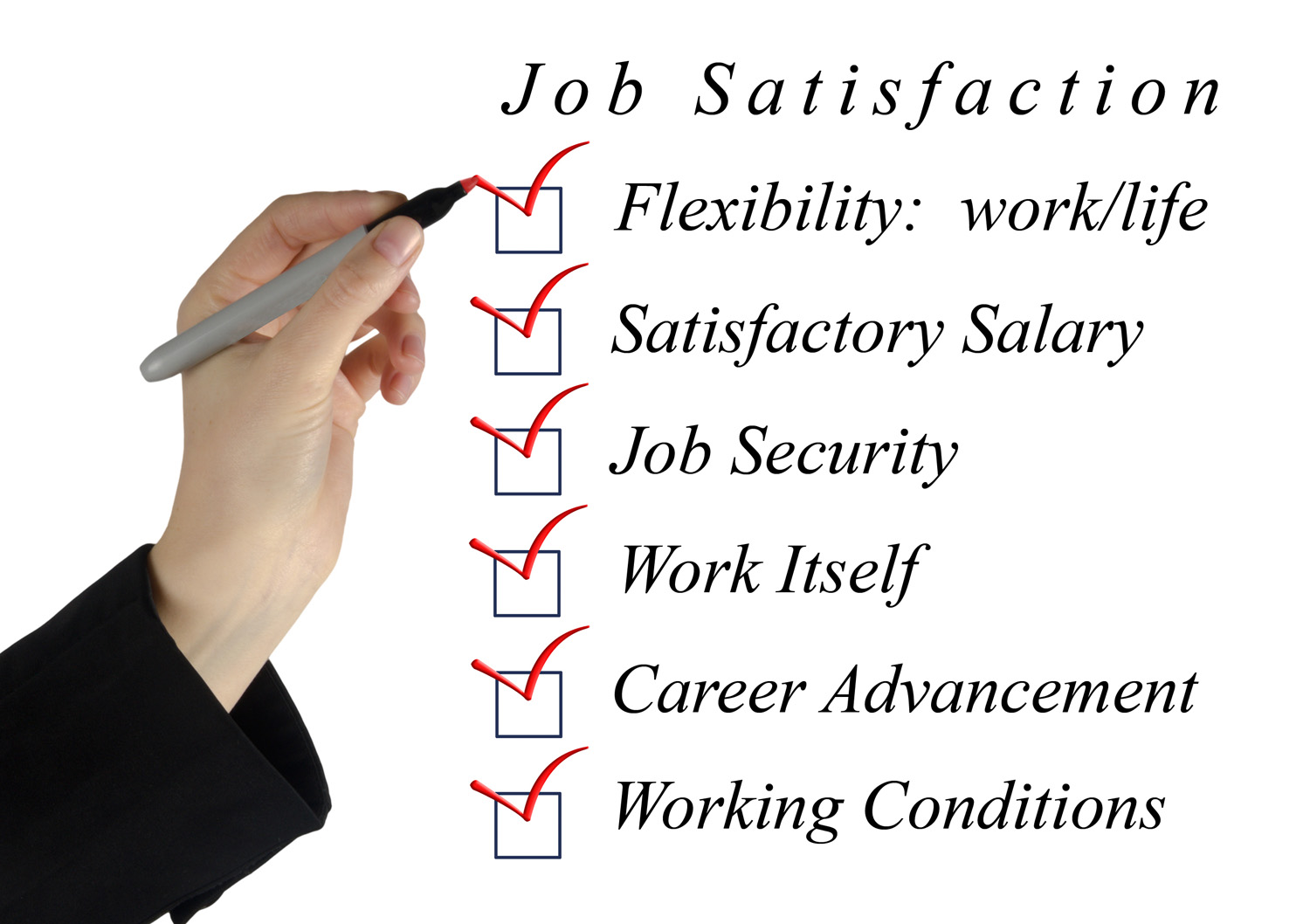 Have you ever wondered how your job affects your happiness? We all know that not all jobs are created equal. Some are awesome, while others … not so much. Well, it turns out that employment status and the type of work you do can have a big impact on how you feel – especially in developing countries where labour markets are usually tighter and switching between jobs can be more difficult.
Have you ever wondered how your job affects your happiness? We all know that not all jobs are created equal. Some are awesome, while others … not so much. Well, it turns out that employment status and the type of work you do can have a big impact on how you feel – especially in developing countries where labour markets are usually tighter and switching between jobs can be more difficult.
A recent study by Carmichael, Darko and Vasilakos (2021) uses survey data from Ethiopia, Peru, India and Vietnam to answer this very question. The study found that the quality of work is a big deal when it comes to how young people feel. Not all jobs are ‘good jobs’ that automatically make you feel great. Although your wellbeing is likely to be higher when you’re in employment than when you’re not, there are certain job attributes that can push that ‘employment premium’ up or down. This is especially important to understand in countries like many in sub-Saharan Africa, where there aren’t many formal jobs, and people often end up overqualified for what they do.
What job attributes lead to higher wellbeing?
 What then are the job attributes that are correlated with higher levels of wellbeing? The first is money: Okay, we know money can’t buy happiness, but it can certainly make life easier. We were therefore hardly surprised to find a positive and statistically significant association between hourly earnings and wellbeing.
What then are the job attributes that are correlated with higher levels of wellbeing? The first is money: Okay, we know money can’t buy happiness, but it can certainly make life easier. We were therefore hardly surprised to find a positive and statistically significant association between hourly earnings and wellbeing.
We were also not surprised to find that a ‘poor working environment’ has a strong and highly significant negative effect on wellbeing.
Finally, feeling proud of your work is also found to be a strongly significant determinant of your wellbeing. After all, people tend to excel in things they like doing, which is probably part of the ‘transmission mechanism’ between ‘work pride’ and ‘subjective wellbeing’.
 Which one of these attributes did you think had the greatest effect on wellbeing? Let me guess, many of you will say ‘earnings’. But then you would be wrong. Earnings were indeed positively associated with wellbeing and statistically significant at just about the 10% level, whereas work pride was very strongly statistically significant at the 1% level and had an effect on wellbeing that was four times greater than hourly earnings.
Which one of these attributes did you think had the greatest effect on wellbeing? Let me guess, many of you will say ‘earnings’. But then you would be wrong. Earnings were indeed positively associated with wellbeing and statistically significant at just about the 10% level, whereas work pride was very strongly statistically significant at the 1% level and had an effect on wellbeing that was four times greater than hourly earnings.
Putting yourself in a poor working environment on the other hand would reduce your wellbeing by almost twice as much as the earnings coefficient.
Policy implications
What does all this mean for policy-makers? If we want to make life better for young people in low-income countries, we need to tackle the problems from multiple angles.
 First, young people need to be helped to get the skills they need for the job market. This can be done through things like training programmes and apprenticeships. However, not all of these programmes are created equal. Some have great results, and others not so much.
First, young people need to be helped to get the skills they need for the job market. This can be done through things like training programmes and apprenticeships. However, not all of these programmes are created equal. Some have great results, and others not so much.
But that’s not the whole story. In many countries, there’s a massive informal job market. It’s a place where people work but often don’t have the rights or protections that formal employees do. So, even if young people get trained, they might not find the ‘good’ jobs they’re hoping for.
Changes also need to be made on a much bigger scale. This often includes decentralising public investment to include rural areas, improving infrastructure, and encouraging private investment. Strengthening labour market rules and social protection can help too, by making sure that work is safe and fair.
In a nutshell, where you work and what kind of work you do can make a big difference to how you feel.
Conclusions
If policy-makers want to help young people in low-income countries, they need both to give them the skills they require and to create better job opportunities. But policy-makers also need to make bigger changes to the way things work, like boosting production and making sure jobs are safe and fair.
In the end, it’s about making life better for young people around the world. Let’s keep working on it!
Articles
- Well-being and employment of young people in Ethiopia, India, Peru and Vietnam: Is work enough?
Development Policy Review, Fiona Carmichael, Christian K. Darko and Nicholas Vasilakos (18/5/21)
- The search for ‘meaning’ at work
BBC Worklife, Kate Morgan (7/9/22)
- Job Satisfaction Is Rising: What’s Behind The Surprising Tend
Forbes, Tracy Brower (4/6/23)
- Young workers are embracing AI, job satisfaction rising: 2023 Young Generation in Tech report
Silicon Canals (4/10/23)
- ‘These jobs can be respectable too’: Why youths in China are abandoning white-collar jobs for ‘light labor’
CNBC, Goh Chiew Tong (6/6/23)
- Does Work Make You Happy? Evidence from the World Happiness Report
Harvard Business Review, Jan-Emmanuel De Neve and George Ward (20/3/17)
- Worker well-being is in demand as organizational culture shifts
American Psychological Association, Monitor on Psychology, Heather Stringer (1/1/23)
- Understanding children’s work and youth employment outcomes in Indonesia
Understanding Children’s Work (UCW) Programme, Villa Aldobrandini and V. Panisperna (June 2012)
- Where are We with Young People’s Wellbeing? Evidence from Nigerian Demographic and Health Surveys 2003–2013
Social Indicators Research, pp.803–33, Boniface Ayanbekongshie Ushie and Ekerette Emmanuel Udoh (November 2016)
- Employment Status and Well-Being Among Young Individuals. Why Do We Observe Cross-Country Differences?
Social Indicators Research, Dominik Buttler (29/6/22)
- Employment Mismatches Drive Expectational Earnings Errors among Mozambican Graduates
The World Bank Economic Review, Sam Jones, Ricardo Santos and Gimelgo Xirinda (27/7/23)
- Youth Employment and Skills Development in The Gambia
World Bank Working Paper 217, Nathalie Lahire, Richard Johanson and Ryoko Tomita Wilcox (2011)
Questions
- How does the quality of work impact the happiness and wellbeing of young people in low- and middle-income countries (LMICs), and why is this significant in the context of job opportunities in sub-Saharan Africa?
- What are some potential solutions and strategies discussed in the article for improving the wellbeing of young people in LMICs, particularly in the context of employment and job opportunities?
- Have you ever experienced a job that significantly (positively or negatively) impacted your wellbeing or happiness? Reflect on your experience and how it influenced your overall life satisfaction?
- How is AI likely to affect the wellbeing of young professional workers?
- How is the pandemic likely to have affected job satisfaction?
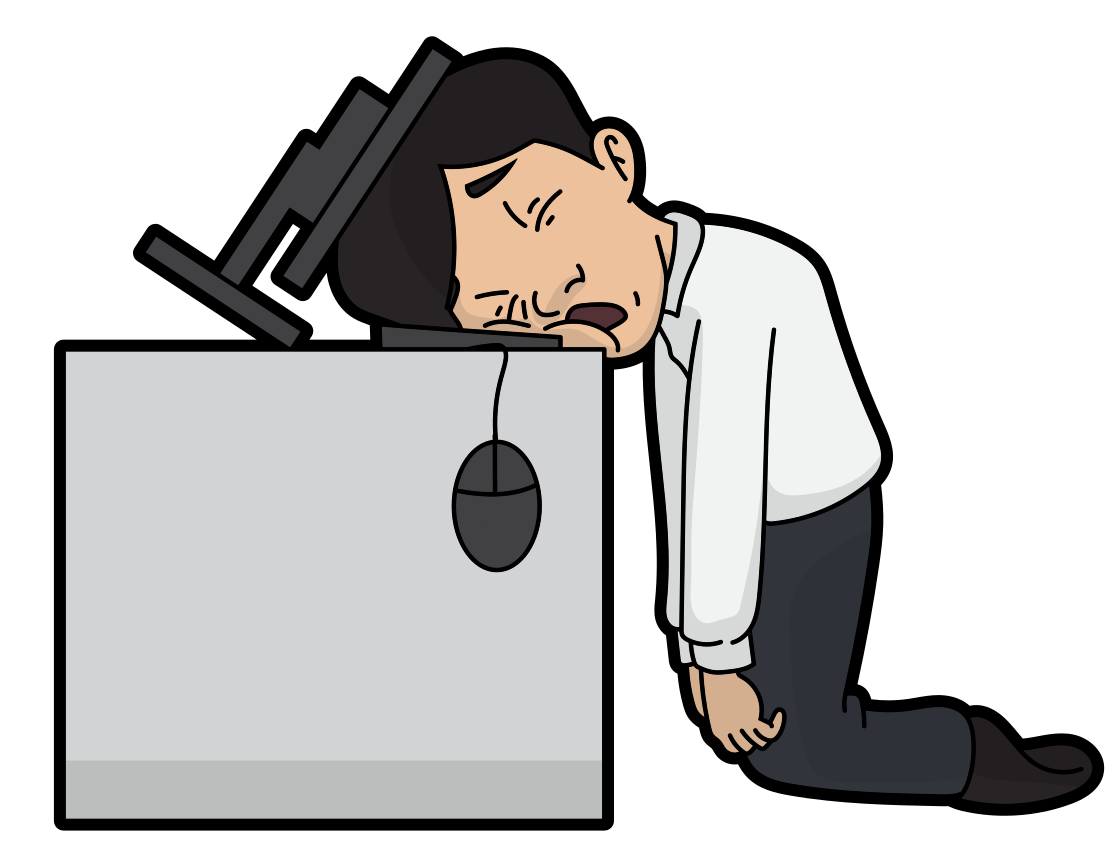 You’ve had a busy day at work. You check your watch; it’s almost 5pm. You should be packing soon – except, your boss is still in their office. You shouldn’t really be seen leaving before your boss, should you? You don’t want to be branded as ‘that guy’ – the one who is ‘not committed’, ‘not willing to go the extra mile’, ‘not flexible enough’, first out of the door’ – you don’t want to have that label pinned on your performance appraisal. After all, your boss is still hard at work, and so are your other colleagues.
You’ve had a busy day at work. You check your watch; it’s almost 5pm. You should be packing soon – except, your boss is still in their office. You shouldn’t really be seen leaving before your boss, should you? You don’t want to be branded as ‘that guy’ – the one who is ‘not committed’, ‘not willing to go the extra mile’, ‘not flexible enough’, first out of the door’ – you don’t want to have that label pinned on your performance appraisal. After all, your boss is still hard at work, and so are your other colleagues.
So you wait, pretending to work, although you do not really do much – perhaps you’re checking Facebook, reading the news or similar. And so does your boss, not wanting to be seen leaving before anyone else. But what example is this going to set for you and your other colleagues. You all wait for someone to make the first move – a prisoner’s dilemma situation. The only difference is that it’s you who is the prisoner in this situation.
Presenteeism
What we have described is an example of presenteeism. But how would we define it? If you search the term on Google Scholar or Scopus, you will come across a number of articles in the fields of health and labour economics that define presenteeism as a phenomenon in which employees who feel physically unwell choose to go to work, or stay on at work, rather than asking for time off to get better (see, for instance, Hansen and Andersen, 2008 and several others). This is also known as sickness presenteeism.
According to Cooper and Lu (2016), however, the use of the term can be extended to describe a wider situation in which a worker is physically present at their workplace but not functioning (by reason of tiredness, physical illness, mental ill-health, peer pressure or whatever else). As explained in Biron and Saksvik (2009):
Cooper’s conceptualisation of presenteeism implied that presenteeism was a behaviour determined by specific determinants (i.e. long working hours and a context of uncertainty). This tendency to stay at work longer than required to display a visible commitment is what Simpson (1998) calls ‘competitive presenteeism’ where people compete on who will stay in the office the longest.
The effect of presenteeism
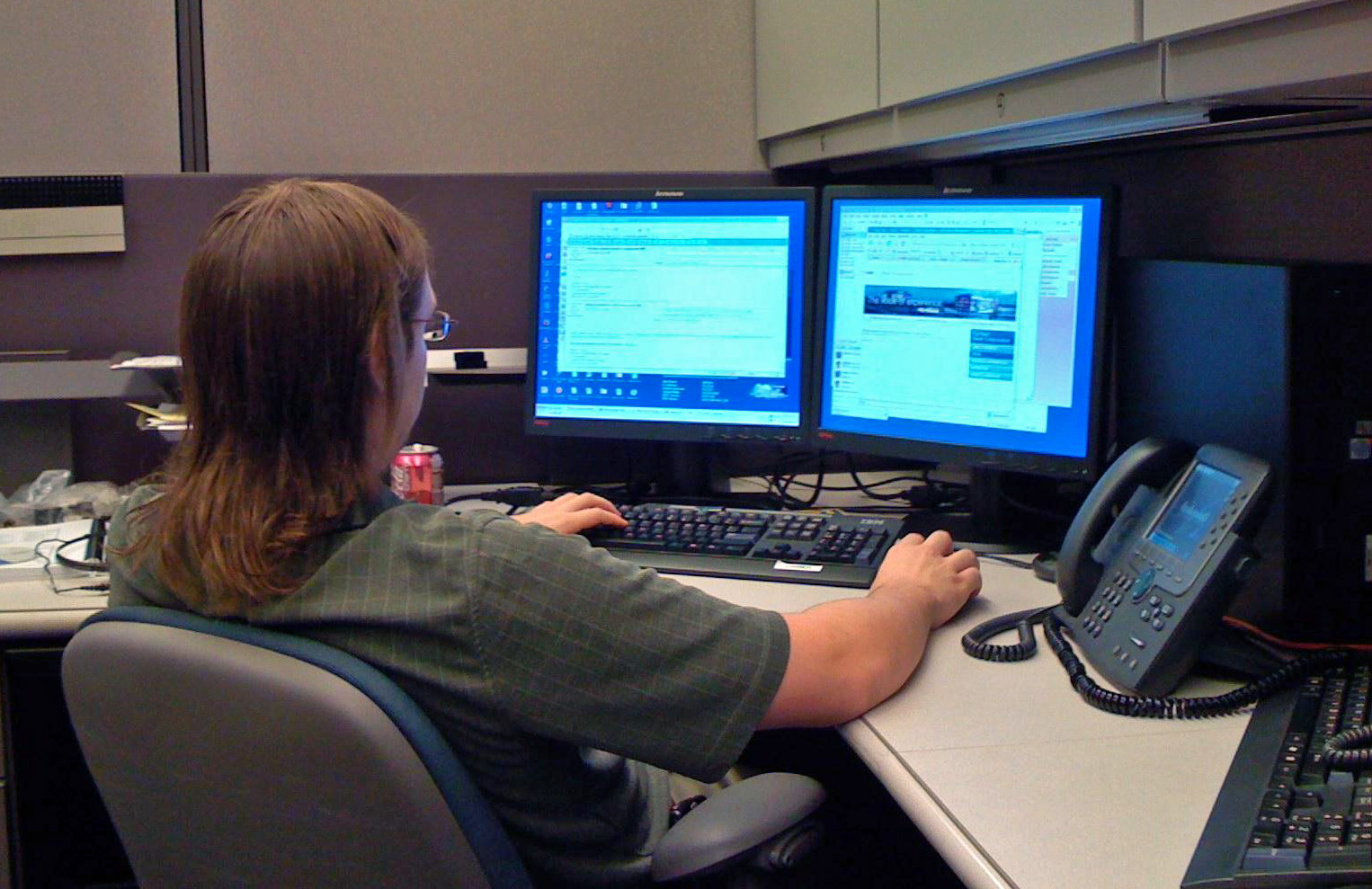 Unsurprisingly, the effect of presenteeism on the wellbeing of workers and the economic performance of firms has been looked at extensively from different angles and disciplines – including health economists, organisational behaviour and labour economists – for a recent and comprehensive review of the literature on this topic see Lohaus and Habermann (2019).
Unsurprisingly, the effect of presenteeism on the wellbeing of workers and the economic performance of firms has been looked at extensively from different angles and disciplines – including health economists, organisational behaviour and labour economists – for a recent and comprehensive review of the literature on this topic see Lohaus and Habermann (2019).
Most of these studies agree that the effects of presenteeism are negative; in particular, they identify significant negative effects on the physical health of workers (Skagen and Collins, 2016); emotional exhaustion and mental health issues (Demerouti et al, 2009); persistent productivity loss (Warren et al, 2011); lower work engagement and negative feelings (Asfaw et al, 2017) – among several others. There seems, therefore, to be plenty of convincing evidence that presenteeism is bad for everyone – business owners, managers and staff.
 So next time that you find yourself stuck at work working silly hours, feeling totally unproductive and just staying to be seen, email this blog to your boss and other colleagues – and ask them if they wish to join you for a drink or a walk.
So next time that you find yourself stuck at work working silly hours, feeling totally unproductive and just staying to be seen, email this blog to your boss and other colleagues – and ask them if they wish to join you for a drink or a walk.
You’re welcome!
(By the way, there’s a saying that in the UK the last one to leave the office is seen as the hardest working, whereas in Germany the last one to leave the office is seen as the least efficient!)
Articles
- The problem with presenteeism
Personnel Today, Nerys Williams (5/12/13)
- Presenteeism and Why You Should Care
Linkedin, Jeffrey Smagacz (25/9/23)
- When so much at work has changed, why can’t we shake presenteeism?
BBC News, Josie Cox (24/7/23)
- What is presenteeism? Counting the cost of presenteeism in the workplace
Enhesa, Lauren Payne (4/10/23)
- Presenteeism at Work
Health Assured (20/1/20 – since updated)
- Turning the tide on presenteeism: how employers can combat the growing problem
The HR Director Magazine, David Bourne (22/5/19)
 Do I really have to be here? The curse of workplace presenteeism
Do I really have to be here? The curse of workplace presenteeismRTE, Kevin Murphy (29/5/19)
- Working when sick is rising and harms you and your employer. This is why
World Economic Forum Agenda, Douglas Broom (2/5/20)
- Majority of absence and presenteeism could be addressed by ‘targeted’ employer support
Occupational health & wellbeing: Personnel Today, Ashleigh Webber (15/4/19)
- How To Break The Chains Of Presenteeism
Forbes, Jack Kelly (25/7/23)
- Eradicating Presenteeism, Absenteeism, and Leavism in the Workplace
SpiceWorks, Jonathan Munnery (7/6/23)
References
- Going ill to work–what personal circumstances, attitudes and work-related factors are associated with sickness presenteeism?
Social science & medicine, Vol 67(6), pp.956–64, Claus D Hansen and Johan Hviid Andersen (June 2008)
- Presenteeism as a global phenomenon
Cross Cultural & Strategic Management, Vol 23(2) pp.216–31, Cary L Cooper and Luo Lu (April 2016)
- Sickness presenteeism and attendance pressure factors: Implications for practice
International handbook of work and health psychology, Chapter 5, Caroline Biron and Per Øystein Saksvik (11/12/09)
- Presenteeism, Power and Organizational Change: Long Hours as a Career Barrier and the Impact on the Working Lives of Women Managers
British Journal of Management, Vol 9(1) pp.37–50, Ruth Simpson (September 1998)
- Presenteeism: A review and research directions
Human Resource Management Review, Vol 29(1), pp.43–58, Daniela Lohaus and Wolfgang Habermann (March 2019)
- The consequences of sickness presenteeism on health and wellbeing over time: A systematic review
Social Science & Medicine, Vol 161, pp.169–77, Kristian Skagen and Alison M.Collins (July 2016)
- Present but sick: a three‐wave study on job demands, presenteeism and burnout
Career Development International, Vol 14(1), pp.50–68, Evangelia Demerouti, Pascale M Le Blanc, Arnold B Bakker, Wilmar B Schaufeli and Joop Hox (2009)
- Cost burden of the presenteeism health outcome: Diverse workforce of nurses and pharmacists
Journal of Occupational and Environmental Medicine, Vol 53(1), pp.90–9, Carol L Warren, Shelley White-Means, Mona Wicks, Cyril F Chang, Dick Gourley and Muriel Rice (January 2011)
- Potential Economic Benefits of Paid Sick Leave in Reducing Absenteeism Related to the Spread of Influenza-Like Illness
Journal of occupational and environmental medicine Vol 59(9), pp.822–9, Abay Asfaw, Roger Rosa and Regina Pana-Cryan (September 2017)
Questions
- ‘Presenteeism leads to lower productivity and firm performance and should be discouraged by business owners and managers’. Discuss.
- Jack Ma, the Chinese billionaire and owner of Ali Baba, has defended his ‘996 work model’ (working 9am to 9pm for 6 days a week) as a ‘huge blessing’. Find and review some articles on this topic, and use them to write a response. Your response should be substantiated using relevant economic theory and empirical research.
- Have you or anyone you know found yourself guilty of presenteeism? Share your experience with the rest of the class, focusing on effects on productivity and your attitude towards your employer and work colleagues.
 A recent report published by the High Pay Centre shows that the median annual CEO pay of the FTSE 100 companies rose by 15.7% in 2022, from £3.38 million in 2021 to £3.91 million – double the UK CPIH inflation rate of 7.9%. Average total pay across the whole economy grew by just 6.0%, representing a real pay cut of nearly 2%.
A recent report published by the High Pay Centre shows that the median annual CEO pay of the FTSE 100 companies rose by 15.7% in 2022, from £3.38 million in 2021 to £3.91 million – double the UK CPIH inflation rate of 7.9%. Average total pay across the whole economy grew by just 6.0%, representing a real pay cut of nearly 2%.
The pay of top US CEOs is higher still. The median annual pay of S&P 500 CEOs in 2022 was a massive $14.8 million (£11.7 million). However, UK top CEOs earn a little more than those in France and Germany. The median pay of France’s CAC40 CEOs was €4.9 million (£4.2 million). This compares with a median of £4.6 million for the CEOs of the top 40 UK companies. The mean pay of Germany’s DAX30 CEOs was €6.1 million (£5.2 million) – lower than a mean of £6.0 million for the CEOs of the top 30 UK companies.
The gap between top CEO pay and that of average full-time workers narrowed somewhat after 2019 as the pandemic hit company performance. However, it has now started widening again. The ratio of the median UK CEO pay to the median pay of a UK full-time worker stood at 123.1 in 2018. This fell to 79.1 in 2020, but then grew to 108.1 in 2021 and 118.1 in 2022.
The TUC has argued that workers should be given seats on company boards and remuneration committees that decide executive pay. Otherwise, the gap is likely to continue rising, especially as remuneration committees in specific companies seek to benchmark pay against other large companies, both at home and abroad. This creates a competitive upward push on remuneration. What is more, members of remuneration committees have the incentive to be generous as they themselves might benefit from the process in the future.
Although the incomes of top CEOs is huge and growing, even if they are excluded, there is still a large gap in incomes between high and low earners generally in the UK. In March 2023, the top 1 per cent of earners had an average gross annual income of just over £200 000; the bottom 10 per cent had an average gross annual income of a little over £8500 – just 4.24% of the top 1 per cent (down from 4.36% in March 2020).
What is more, in recent months, the share of profits in GDP has been rising. In 2022 Q3, gross profits accounted for 21.2% of GDP. By 2023 Q2, this had risen to 23.4%. As costs have risen, so firms have tended to pass a greater percentage increase on to consumers, blaming these price increases on the rise in their costs.
Life at the bottom
 The poor spend a larger proportion of their income on food, electricity and gas than people on average income; these essential items have a low income elasticity of demand. But food and energy inflation has been above that of CPIH inflation.
The poor spend a larger proportion of their income on food, electricity and gas than people on average income; these essential items have a low income elasticity of demand. But food and energy inflation has been above that of CPIH inflation.
In 2022, the price of bread rose by 20.5%, eggs by 28.9%, pasta by 29.1%, butter by 29.4%, cheese by 32.6% and milk by 38.5%; the overall rise in food and non-alcoholic beverages was 16.9% – the highest rise in any of the different components of consumer price inflation. In the past two years there has been a large increase in the number of people relying on food banks. In the six months to September 2022, there was a 40% increase in new food bank users when compared to 2021.
As far as energy prices are concerned, from April 2022 to April 2023, under Ofgem’s price cap, which is based on wholesale energy prices, gas and electricity prices would have risen by 157%, from £1277 to £3286 for the typical household. The government, however, through the Energy Price Guarantee restricted the rise to an average of £2500 (a 96% rise). Also, further help was given in the form of £400 per household, paid in six monthly instalments from October 2022 to March 2023, effectively reducing the rise to £2100 (64%). Nevertheless, for the poorest of households, such a rise meant a huge percentage increase in their outgoings. Many were forced to ‘eat less and heat less’.
 Many people have got into rent arrears and have been evicted or are at risk of being so. As the ITV News article and videos linked below state: 242 000 households are experiencing homelessness including rough sleeping, sofa-surfing and B&B stays; 85% of English councils have reported an increase in the number of homeless families needing support; 97% of councils are struggling to find rental properties for homeless families.
Many people have got into rent arrears and have been evicted or are at risk of being so. As the ITV News article and videos linked below state: 242 000 households are experiencing homelessness including rough sleeping, sofa-surfing and B&B stays; 85% of English councils have reported an increase in the number of homeless families needing support; 97% of councils are struggling to find rental properties for homeless families.
Financial strains have serious effects on people’s wellbeing and can adversely affect their physical and mental health. In a policy research paper, ‘From Drained and Desperate to Affluent and Apathetic’ (see link below), the consumer organisation, Which?, looked at the impact of the cost-of-living crisis on different groups. It found that in January 2023, the crisis had made just over half of UK adults feel more anxious or stressed. It divided the population into six groups (with numbers of UK adults in each category in brackets): Drained and Desperate (9.2m), Anxious and At Risk (7.9m), Cut off by Cutbacks (8.8m), Fretting about the Future (7.7m), Looking out for Loved Ones (8.9m), Affluent and Apathetic (8.8m).
The majority of the poorest households are in the first group. As the report describes this group: ‘Severely impacted by the crisis, this segment has faced significant physical and mental challenges. Having already made severe cutbacks, there are few options left for them.’ In this group, 75% do not turn the heating on when cold, 63% skip one or more meals and 94% state that ‘It feels like I’m existing instead of living’.
Many of those on slightly higher incomes fall into the second group (Anxious and At Risk). ‘Driven by a large family and mortgage pressure, this segment has not been particularly financially stable and experienced mental health impacts. They have relied more on borrowing to ease financial pressure.’
Although inflation is now coming down, prices are still rising, interest rates have probably not yet peaked and real incomes for many have fallen significantly. Life at the bottom has got a lot harder.
Articles
- FTSE 100 CEOs get half a million pound pay rise
High Pay Centre (21/8/23)
- Call for reforms as median FTSE 100 chief executive pay topped £3.91m in 2022
Sky News, Sarah Taaffe-Maguire (22/8/23)
- FTSE 100 bosses given average 16% pay rises
Financial Times, Michael O’Dwyer, George Parker and Jim Pickard (21/8/23)
- Median pay for a FTSE 100 CEO increased from £3.38 million in 2021 to £3.91 million in 2022, the High Pay Centre said
Morningstar, Alliance News (22/8/23)
- FTSE 100 bosses ‘given average pay rise of £500,000 in 2022’
The Guardian, Rupert Neate (22/8/23)
- Big firm bosses’ pay rose 16% as workers squeezed
BBC News, Michael Race (22/8/23)
- Anxious and at risk? Britons fall into six cost of living groups, report finds
The Guardian, Robert Booth (29/7/23)
- From Drained and Desperate to Affluent and Apathetic
Which?, Nicole Chan, Katie Alpin and Ash Strange (29/7/23)
- To grasp the extent of inequality, look at the relatively well-off
LSE blog, Gerry Mitchell and Marcos González Hernando (17/7/23)
- Growing inequality across Britain has left millions of families exposed to the cost-of-living crisis
Resolution Foundation, Lalitha Try (25/1/23)
- Earned income taxed twice as heavily as capital gains for some in UK, study finds
The Guardian, Phillip Inman (20/8/23)
- Reducing inequality benefits everyone — so why isn’t it happening?
Nature, Editorial (16/8/23)
 Homeless families forced to live in tents and hotels as temporary accommodation runs out
Homeless families forced to live in tents and hotels as temporary accommodation runs outITV News, Daniel Hewitt (22/8/23)
Reports
Data
Questions
- What are the arguments for and against giving huge pay awards to CEOs?
- What are the arguments for and against raising the top rate of income tax to provide extra revenue to distribute to the poor? Distinguish between income and substitution effects.
- What policies could be adopted to alleviate poverty? Why are such policies not adopted?
- Using the ONS publication, the Effects of taxes and benefits on UK household income, find out how the distribution of income between the various decile groups of household income has changed over time? Comment on your findings.
 Global long-term economic growth has slowed dramatically since the financial crisis of 2007–8. This can be illustrated by comparing the two 20-year periods 1988 to 2007 and 2009 to 2028 (where IMF forecasts are used for 2024 to 2028: see WEO Database under the Data link below). Over the two periods, average annual world growth fell from 3.8% to 3.1%. In advanced countries it fell from 2.9% to 1.6% and in developing countries from 4.8% to 4.3%. In the UK it fell from 2.4% to 1.2%, in the USA from 3.1% to 1.8% and in Japan from 1.9% to 0.5%.
Global long-term economic growth has slowed dramatically since the financial crisis of 2007–8. This can be illustrated by comparing the two 20-year periods 1988 to 2007 and 2009 to 2028 (where IMF forecasts are used for 2024 to 2028: see WEO Database under the Data link below). Over the two periods, average annual world growth fell from 3.8% to 3.1%. In advanced countries it fell from 2.9% to 1.6% and in developing countries from 4.8% to 4.3%. In the UK it fell from 2.4% to 1.2%, in the USA from 3.1% to 1.8% and in Japan from 1.9% to 0.5%. In the UK, labour productivity growth in the production industries was 6.85% per annum from 1998 to 2006. If this growth rate had been maintained, productivity would have been 204% higher by the end of 2023 than it actually was. This is shown in the chart (click here for a PowerPoint).
In the UK, labour productivity growth in the production industries was 6.85% per annum from 1998 to 2006. If this growth rate had been maintained, productivity would have been 204% higher by the end of 2023 than it actually was. This is shown in the chart (click here for a PowerPoint). A major determinant of long-term economic growth and productivity is investment. Investment has been badly affected by crises, such as the financial crisis and COVID, and by geopolitical tensions, such as the war in Ukraine and tensions between the USA and China and potential trade wars. It has also been adversely affected by government attempts to deal with rising debt caused by interventions following the financial crisis and COVID. The fiscal squeeze and, more recently higher interest rates, have dampened short-term growth and discouraged investment, thereby dampening long-term growth.
A major determinant of long-term economic growth and productivity is investment. Investment has been badly affected by crises, such as the financial crisis and COVID, and by geopolitical tensions, such as the war in Ukraine and tensions between the USA and China and potential trade wars. It has also been adversely affected by government attempts to deal with rising debt caused by interventions following the financial crisis and COVID. The fiscal squeeze and, more recently higher interest rates, have dampened short-term growth and discouraged investment, thereby dampening long-term growth. Artificial intelligence. One important driver of productivity growth is technological advance. The rapid advance in AI and its adoption across much of industry is likely to have a dramatic effect on working practices and output. Estimates by the IMF suggest that some 40% of jobs globally and 60% in advanced countries could be affected – some replaced and others complemented and enhanced by AI. The opportunities for raising incomes are huge, but so too are the dangers of displacing workers and deepening inequality, as some higher-paid jobs are enhanced by AI, while many lower paid jobs are little affected and other jobs disappear.
Artificial intelligence. One important driver of productivity growth is technological advance. The rapid advance in AI and its adoption across much of industry is likely to have a dramatic effect on working practices and output. Estimates by the IMF suggest that some 40% of jobs globally and 60% in advanced countries could be affected – some replaced and others complemented and enhanced by AI. The opportunities for raising incomes are huge, but so too are the dangers of displacing workers and deepening inequality, as some higher-paid jobs are enhanced by AI, while many lower paid jobs are little affected and other jobs disappear.  Training. And it is not just training in the use of AI that is important. Training generally is a key ingredient in encouraging productivity growth. In the UK, there has been a decline in investment in adult education and training, with a 70% reduction since the early 2000s in the number of adults undertaking publicly-funded training, and with average spending on training by employers decreasing by 27% per trainee since 2011. The Institute for Fiscal Studies identifies five main policy levers to address this: “public funding of qualifications and skills programmes, loans to learners, training subsidies, taxation of training and the regulation of training” (see link in articles below).
Training. And it is not just training in the use of AI that is important. Training generally is a key ingredient in encouraging productivity growth. In the UK, there has been a decline in investment in adult education and training, with a 70% reduction since the early 2000s in the number of adults undertaking publicly-funded training, and with average spending on training by employers decreasing by 27% per trainee since 2011. The Institute for Fiscal Studies identifies five main policy levers to address this: “public funding of qualifications and skills programmes, loans to learners, training subsidies, taxation of training and the regulation of training” (see link in articles below). Public-sector investment is also key. Good road and rail infrastructure and public transport are vital in encouraging private investment and labour mobility. And investment in health, education and training are a key part in encouraging the development of human capital. Many countries, the UK included, cut back on public-sector capital investment after the financial crisis and this has had a dampening effect on economic growth.
Public-sector investment is also key. Good road and rail infrastructure and public transport are vital in encouraging private investment and labour mobility. And investment in health, education and training are a key part in encouraging the development of human capital. Many countries, the UK included, cut back on public-sector capital investment after the financial crisis and this has had a dampening effect on economic growth. Even if AI does massively boost the growth in world GDP, the distribution is likely to be highly uneven, both between countries and within countries. This could widen the gap between rich and poor and create a range of social tensions.
Even if AI does massively boost the growth in world GDP, the distribution is likely to be highly uneven, both between countries and within countries. This could widen the gap between rich and poor and create a range of social tensions.  In some industries, AI will enhance labour productivity. It will be a tool that will be used by workers to improve the service they offer or the items they produce. In other cases, it will replace labour. It will not simply be a tool used by labour, but will do the job itself. Workers will be displaced and structural unemployment is likely to rise. The quicker the displacement process, the more will such unemployment rise. People may be forced to take more menial jobs in the service sector. This, in turn, will drive down the wages in such jobs and employers may find it more convenient to use gig workers than employ workers on full- or part-time contracts with holidays and other rights and benefits.
In some industries, AI will enhance labour productivity. It will be a tool that will be used by workers to improve the service they offer or the items they produce. In other cases, it will replace labour. It will not simply be a tool used by labour, but will do the job itself. Workers will be displaced and structural unemployment is likely to rise. The quicker the displacement process, the more will such unemployment rise. People may be forced to take more menial jobs in the service sector. This, in turn, will drive down the wages in such jobs and employers may find it more convenient to use gig workers than employ workers on full- or part-time contracts with holidays and other rights and benefits. Another set of issues arises in education. What knowledge should students be expected to acquire? Should the focus of education continue to shift towards analytical skills and understanding away from the simple acquisition of knowledge and techniques. This has been a development in recent years and could accelerate. Then there is the question of assessment. Generative AI creates a range of possibilities for plagiarism and other forms of cheating. How should modes of assessment change to reflect this problem? Should there be a greater shift towards exams or towards project work that encourages the use of AI?
Another set of issues arises in education. What knowledge should students be expected to acquire? Should the focus of education continue to shift towards analytical skills and understanding away from the simple acquisition of knowledge and techniques. This has been a development in recent years and could accelerate. Then there is the question of assessment. Generative AI creates a range of possibilities for plagiarism and other forms of cheating. How should modes of assessment change to reflect this problem? Should there be a greater shift towards exams or towards project work that encourages the use of AI?
 Have you ever wondered how your job affects your happiness? We all know that not all jobs are created equal. Some are awesome, while others … not so much. Well, it turns out that employment status and the type of work you do can have a big impact on how you feel – especially in developing countries where labour markets are usually tighter and switching between jobs can be more difficult.
Have you ever wondered how your job affects your happiness? We all know that not all jobs are created equal. Some are awesome, while others … not so much. Well, it turns out that employment status and the type of work you do can have a big impact on how you feel – especially in developing countries where labour markets are usually tighter and switching between jobs can be more difficult. What then are the job attributes that are correlated with higher levels of wellbeing? The first is money: Okay, we know money can’t buy happiness, but it can certainly make life easier. We were therefore hardly surprised to find a positive and statistically significant association between hourly earnings and wellbeing.
What then are the job attributes that are correlated with higher levels of wellbeing? The first is money: Okay, we know money can’t buy happiness, but it can certainly make life easier. We were therefore hardly surprised to find a positive and statistically significant association between hourly earnings and wellbeing. Which one of these attributes did you think had the greatest effect on wellbeing? Let me guess, many of you will say ‘earnings’. But then you would be wrong. Earnings were indeed positively associated with wellbeing and statistically significant at just about the 10% level, whereas work pride was very strongly statistically significant at the 1% level and had an effect on wellbeing that was four times greater than hourly earnings.
Which one of these attributes did you think had the greatest effect on wellbeing? Let me guess, many of you will say ‘earnings’. But then you would be wrong. Earnings were indeed positively associated with wellbeing and statistically significant at just about the 10% level, whereas work pride was very strongly statistically significant at the 1% level and had an effect on wellbeing that was four times greater than hourly earnings. First, young people need to be helped to get the skills they need for the job market. This can be done through things like training programmes and apprenticeships. However, not all of these programmes are created equal. Some have great results, and others not so much.
First, young people need to be helped to get the skills they need for the job market. This can be done through things like training programmes and apprenticeships. However, not all of these programmes are created equal. Some have great results, and others not so much. You’ve had a busy day at work. You check your watch; it’s almost 5pm. You should be packing soon – except, your boss is still in their office. You shouldn’t really be seen leaving before your boss, should you? You don’t want to be branded as ‘that guy’ – the one who is ‘not committed’, ‘not willing to go the extra mile’, ‘not flexible enough’, first out of the door’ – you don’t want to have that label pinned on your performance appraisal. After all, your boss is still hard at work, and so are your other colleagues.
You’ve had a busy day at work. You check your watch; it’s almost 5pm. You should be packing soon – except, your boss is still in their office. You shouldn’t really be seen leaving before your boss, should you? You don’t want to be branded as ‘that guy’ – the one who is ‘not committed’, ‘not willing to go the extra mile’, ‘not flexible enough’, first out of the door’ – you don’t want to have that label pinned on your performance appraisal. After all, your boss is still hard at work, and so are your other colleagues.  Unsurprisingly, the effect of presenteeism on the wellbeing of workers and the economic performance of firms has been looked at extensively from different angles and disciplines – including health economists, organisational behaviour and labour economists – for a recent and comprehensive review of the literature on this topic see Lohaus and Habermann (2019).
Unsurprisingly, the effect of presenteeism on the wellbeing of workers and the economic performance of firms has been looked at extensively from different angles and disciplines – including health economists, organisational behaviour and labour economists – for a recent and comprehensive review of the literature on this topic see Lohaus and Habermann (2019). So next time that you find yourself stuck at work working silly hours, feeling totally unproductive and just staying to be seen, email this blog to your boss and other colleagues – and ask them if they wish to join you for a drink or a walk.
So next time that you find yourself stuck at work working silly hours, feeling totally unproductive and just staying to be seen, email this blog to your boss and other colleagues – and ask them if they wish to join you for a drink or a walk.  A recent report published by the
A recent report published by the  The poor spend a larger proportion of their income on food, electricity and gas than people on average income; these essential items have a low income elasticity of demand. But food and energy inflation has been above that of CPIH inflation.
The poor spend a larger proportion of their income on food, electricity and gas than people on average income; these essential items have a low income elasticity of demand. But food and energy inflation has been above that of CPIH inflation.  Many people have got into rent arrears and have been evicted or are at risk of being so. As the ITV News article and videos linked below state: 242 000 households are experiencing homelessness including rough sleeping, sofa-surfing and B&B stays; 85% of English councils have reported an increase in the number of homeless families needing support; 97% of councils are struggling to find rental properties for homeless families.
Many people have got into rent arrears and have been evicted or are at risk of being so. As the ITV News article and videos linked below state: 242 000 households are experiencing homelessness including rough sleeping, sofa-surfing and B&B stays; 85% of English councils have reported an increase in the number of homeless families needing support; 97% of councils are struggling to find rental properties for homeless families.